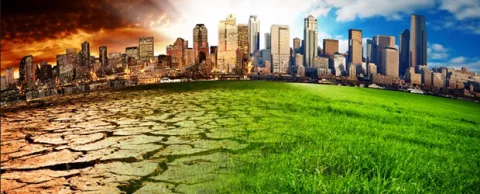
About 1.2 billion people in the world now face intermittent to persistent water shortages and 500 million more are expected to join them in a few years. Many water treatment and delivery facilities are old and losing massive amounts of water. Water loss is a serious challenge that calls for new strategies, business models and smart technologies.
But many parts of the U.S. and other regions of the world are facing another challenge that demands we transform our water treatment and delivery systems into resilient, efficient networks as soon as we can. Severely hot, dry conditions and drought are affecting many of them and fast approaching for others.
Most of the articles in this special issue on drought address how we can achieve efficient, conservation-oriented and resilient water systems: the strategies and risk assessment, the infrastructure improvement technologies. The article below shares examples of how damaging drought can be—and why addressing the problem quickly is critically important. Your city or region may not be struggling with drought now, but that's no guarantee it couldn't happen. —Doug Peeples
California has rolled back many of its mandatory water conservation rules, but the state's historic five-year long drought is far from over. The winter rains brought by El Niño earlier were less than expected and were concentrated more in the northern part of the state, leaving southern California reservoirs low. And some meteorologists are predicting next year's El Niña could bring more dry weather to the state.
The state-mandated residential water use restrictions were lifted in May, but some prohibitions remain in place. Those restrictions did not affect agricultural water use, which is subject to different regulations. What the decision did was place responsibility for conservation on local governments, which are expected to implement conservation measures best suited to their needs and situation. And local water utilities are expected to have enough water on hand to cover three dry years. Some water utilities had been dropping conservation measures they implemented themselves before the state rollback.
The state decision was and remains controversial. Some believe people will feel free to waste water as they had before while others say they've learned their lesson and will continue to be careful and conserve.
The impact of the drought on California was massive: thousands of agricultural and related jobs lost, hundreds of thousands of acres of farmland and orchards put out of production and dairy and livestock operations curtailed.
But it's not all about California
And it's not simply an issue of "Will there be enough water to drink?" When food producers have no water, their crop harvests are far smaller, if they have anything to harvest at all. For cities and countries that depend on exporting agricultural products, severe water shortages can have crippling effects on economies that will take years to recover from. And while droughts affect rural areas first, cities eventually feel the pain. And droughts also affect the environment, wildlife and public safety. Consider the damage wildfires do in dry areas.
This summer has been particularly hot—and dry— for much of Massachusetts. Enough so that more than 100 communities have imposed water use restrictions, and state regulators issued a drought watch for the central and northeast parts of the state and a drought advisory for the southeastern part of the state and the Connecticut River Valley.
Earlier this month, New York regulators issued a drought watch for the entire state. Rainfall there, particularly in the western part of the state, has been less than normal for the past nine months.
Parts of northeast Texas are experiencing drought or conditions close to it. Heat waves in the heartland are threatening flash droughts.
And it's not just the U.S.
Farmers and ranchers in the Australian state of New South Wales are accustomed to occasional droughts, but they have been experiencing a three-year drought that has left many almost bankrupt. The country is one of the world's largest exporters of beef, wheat and sugar. A state-commissioned report recently rejected providing drought insurance for the industry.
Vietnam's Mekong River Delta has been suffering from the worst drought the country has seen in 90 years, which has left one million people with inadequate food and two million without access to drinking water. The drought is bad enough, but the problem is compounded because low river water levels allow seawater to seep into the delta. The region's rice, sugar and fruit crops are gone. Vietnam is the third largest exporter of rice in the world and rice from the delta feeds much of the country.
For more...
The Smart Cities Readiness Guide's chapter on Water and Wastewater provides tools cities can use to apply smart technology for economical, sustainable water supplies as well as ways to ensure the greatest benefit from them. It also includes case studies to illustrate how other cities have managed their water system upgrades and additions.
Doug Peeples is a Portland, Oregon-based writer specializing in technology and energy. Follow @smartccouncil on Twitter.



